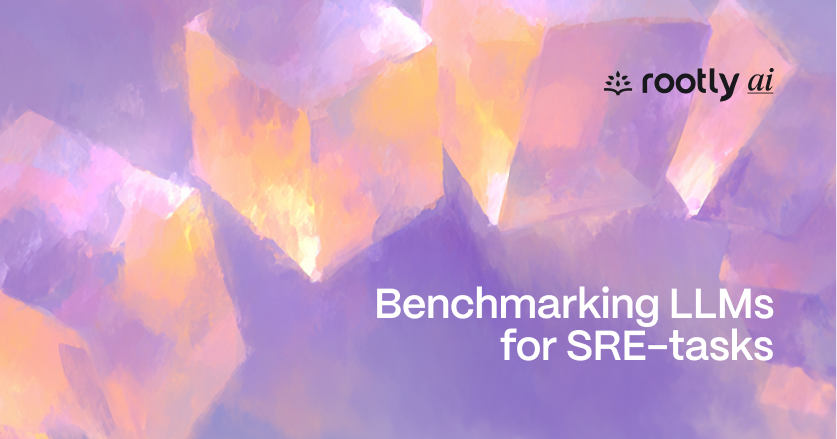

Benchmarking LLMs for SRE-tasks, boosting Sonnet 4.5 performance by 100%
The new edition of our benchmark features Terraform tasks across AWS, GPC, and Azure, plus incorporates a new dimension: prompt-optimization.

Slack was originally conceived as a multiplayer game called Glitch, but after the game flopped, the team pivoted to productize the collaboration tool they had built to work on Glitch. Slack may not be a game, but you’ve surely seen wins, KOs, and drama happening through it over the years.
Given Slack’s pivotal role in how your teams collaborate, having responders manage incidents through Slack is a great option. Your responders are familiar with it, and it lets you connect with anyone in the organization about an incident—whether they need to know about it or are asked to help with it.
In this article, you’ll get ideas on how to use Slack to automate your incident resolution process throughout the entire incident lifecycle: from alert to retrospective.
To deal with an incident, your responder must be familiar with a complex system and juggle dozens of tools. Asking them to use yet another tool to manage incidents is an unnecessary burden. Instead, managing incidents using the collaboration tool your team already knows can help them be more effective.
You can manage the entire lifecycle of all your incidents without leaving Slack.
When an incident breaks, the last thing you want to deal with is setting up Slack channels and organizing everything your team needs to start collaborating. You can automate the creation of a Slack channel with everything required, including a ready-to-use Zoom room, a namespace for Linear tickets, and references to the relevant playbook.
You can connect your on-call solution to Slack so alerts show up there and allow you to convert them to incidents with everything set up. From there, the incident management process becomes easier because you follow the steps within Slack, reducing confusion.
When you declare an incident as SEV2, you probably need more than just the response team to know what’s going on. Slack automations can help you notify a leadership channel or specific users based on various incident conditions.
You can update your status page directly from within the incident Slack channel, without having to go to an external tool. This helps you save time and keep the status highly relevant. You can also restrict updates to the status page so only specific roles can make changes.
Additionally, you can ensure that your status page automatically returns to "All Systems Up" status immediately after resolving an incident.
Make retrospectives, or post-mortems, easier by allowing your responders to kickstart the process from Slack. Incident management tools like Rootly automatically collect insights about the incident, helping you build an accurate timeline by marking milestone messages in Slack.
Instead of spending time gathering information, your team can dive into the retrospective, focusing on what caused the incident and how to prevent it in the future.
Once your incident response process is managed through Slack, you’ll have a wealth of information about each incident at your disposal. You can use AI to leverage this information to simplify your responders’ tasks. Common uses for AI in incident response include generating draft summaries and identifying similar past incidents.
Google has seen a 51% reduction in the time needed for responders to write summaries by introducing AI. With Rootly AI, you can take it a step further and allow anyone to ask questions about incidents to the AI, reducing the need for responders to repeatedly explain the situation to stakeholders.
Trusted by hundreds of SRE teams, including those at LinkedIn, Cisco, Dropbox, and Webflow, Rootly is the leading on-call and incident response tool in the market.
Rootly’s Slack bot offers robust automations that set up your response team in seconds with everything they need to collaborate: a Slack channel with Zoom or Google Meet videoconferencing, incident roles with actions, bidirectional task tracking with Jira, enterprise AI, and many more options.
Book a demo with our reliability experts to learn how Rootly can help you resolve incidents faster through Slack.